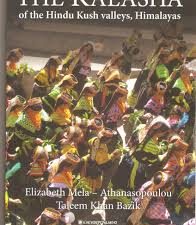It is book review week here on Lingoblog! Today, we are bringing you a review of “Balanguru: mennesker og myter i en kalashalandsby i Hindukush [Balanguru: people and myths in a Kalasha village in Hindukush]”.
When I was a student and studied linguistic anthropology in Amsterdam, taught by the anthropologist Johannes Fabian (now 82 years old), one of the tasks that we got as students was that we all had to read an anthropological monograph of our own choice. An ethnographic description of a tribal group’s nature. Thus, while we read the book, we were instructed to be particularly aware of what the anthropologist wrote about language. Did they learn the language to be able to communicate with the natives? We had to write a report about it, and it was a fun task. It turned out that there are considerable differences between the monographs, both in quality and quantity. Some authors wrote almost nothing about language, and others included something like a mini-grammar.
Now I can repeat the task of reading a book written by an anthropologist, but this time I’m not reading about the Basque country, which I wrote about as a student, but about the Kalasha people. I have just finished reading the book.
In the anthropological tradition in the United States, linguistics is one of four branches of anthropology, alongside cultural anthropology, physical anthropology and archaeology. Overseas, linguistics is a fixed part of the study programme, while in Denmark, anthropologists seem somewhat indifferent to their profession. As far as I know, linguistics is not part of any anthropological study programmes in Denmark. If it is, students are told about Saussure, a linguist who died 106 years ago, and about how the anthropologist Lévi-Strauss, who was great in the 1930s, was inspired by the structuralist wave in linguistics to develop his structural anthropological theory.
Of course, languages and linguistics should be interesting and important for anthropological research, also in Denmark. However, anthropological-linguistic research is carried out in Denmark solely by linguists, and not by anthropologists, and this applies to both Aarhus, University of Southern Denmark, Copenhagen and Roskilde.
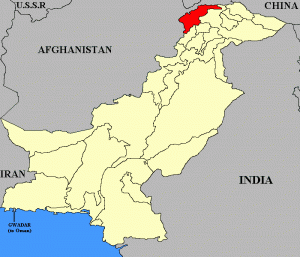
Birgitte Sperber is a Danish researcher who has spent a lot of time in a village called Balanguru in the province of Chitral (independent until 1947, now part of Pakistan). It’s one of the mountain villages where the Kalasha people live, at an altitude of almost two kilometers up in the mountains. Between 1983 and 2018, she has visited the village several times, spending more than two years there overall. She has studied biology, geography and ethnography, and she retired from her job as a teacher. She has a close relationship with the Kalasha people, and that is clear in her book of 500 pages with a variety of black and white and color illustrations. The book is written in Danish, and an English translation is in preparation.
The Kalasha people, formerly known as Black Kafirs, used to live in Kafiristan, together with the so-called Red Kafirs in Nuristan, part of Afghanistan. The language, culture and religion of the two groups had many common characteristics. The Kalashas dominated earlier in a large part of southern Chitral, where there are still people who speak the Kalasha language (Kalashamon).
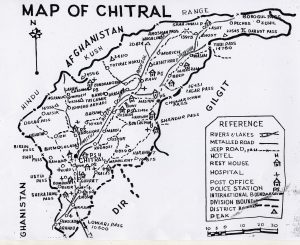
The Kalasha population is a recognised and protected linguistic and religious minority in Islāmī Jumhūriyah Pākistān, or the Islamic Republic of Pakistan. Once it was a part of Kafiristan, “the Land of Pagans”, and the southern part is now called Nuristan, “the Land of Light”, after the region has been forcibly converted to Islam. Nuristan is now a province of Afghanistan. Kalashas are now living in the Himalayas in northern Pakistan, where they have been for a long time. They try to hold on to their polytheistic traditions. Their special identity is not only shown in religion, but also in, among other things, the colorful clothes of the women, the treatment of their body and their unique language, which is Indo-Iranian but incomprehensible to everyone else.
However, more and more Kalashas, especially women, shift to Islam. There are approx. 3.000 Kalasha, and they live in three valleys in the Himalayas in Pakistan, close to the Afghan border.
I have had an interest in the Kalashas for many years, and I have written two articles about their language. Nevertheless, I did not know about the existence of Birgitte Sperber’s book before she responded to a previous post on the Kalasha at Lingoblog. The book was published by a small Danish publisher, Mellemgaard. The book is worth being better known.
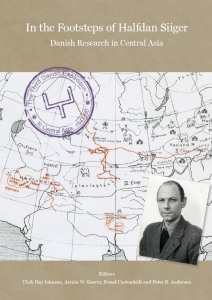
Denmark has special connections with the Kalasha people, which go back at least 70 years. There are several Danish anthropologists, scholars of religion and linguists who have done research there, such as the linguist Jan Heegård, the anthropologist Mytte Fentz, anthropologist-historian Svend Castenfeldt, and already in the 1940s, expert in the history of religions Halfdan Siiger did research in the valleys. All of these people have written about the Kalashas, their culture, language or religion. In addition, Moesgaard Museum in Aarhus has a number of important, in some cases unique, historical objects from the Kalasha people.
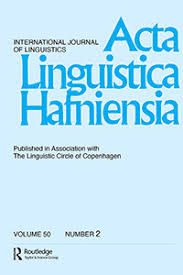
I’ve read Birgitte Sperber’s book with great interest. You gain insight in another world, with shamans, fairies, demons, and clean and unclean areas and people. You also get to know a lot of individual people, such as the man with the misshaped head, the village idiot, the amateur doctor, the Shaman, the goat shepherd, and so on. You also learn about the biggest threats to the Kalasha society. There are regular earthquakes and floods, and thieves, robbers and kidnappers come from Nuristan to ravage people and rob cattle. Several Kalashas and their helpers have been killed or abducted over the years. Converts to Islam no longer participate in festivals and rituals, and they shift to other languages, such as Khowar or Urdu, as Kalashamon is not the language of Allah.
The author’s passion for the Kalasha people is evident on all pages of the book. She has learnt their language, and she is accepted as one of them, and through her book, you get an intimate view of a number of individuals, and a whole society. She reproduces myths, life stories (always with time and names), death stories, descriptions of rituals, including her own experiences, such as her active role in, for example, local health challenges. It is a strength of the book that you get to know individual people with their good and (sometimes) less good sides. On the other hand, you are also wondering whether you might get too much information, and whether the people who were mentioned would always be happy to read what she says about them. The author herself appears to have a very respectful attitude towards the people, but once in a while she seems to break the spiritual rules – however, there are also natives who do so.

The book is entirely a-theoretical, and it is limited to descriptions. We don’t get to know what Pierre Bourdieu, Michel Foucault, Judith Butler or Homi Bhabha would have thought about Kalasha traditions. Fortunately. Personally, I think it’s refreshing to be able to read such a classical ethnographical description, where the myths and descriptions are disclosed as they were told and recorded on film by the author, or observed by her. Much of the current anthropological tradition is no longer descriptive, but researchers are concerned with increasing self-reflection or navel-gazing.
The book is richly illustrated with hundreds of small black and white images, and several of them are also in color. Unfortunately, the black and white images are sometimes too small to be able to see the details. Almost all photos and drawings were made by the author, with the exception of some of the areas taboo for women, where other people’s images are used, including a number of pictures made by a Kalasha man.
As I have already mentioned, I’ve read the entire book with great pleasure. The combination of personal experiences (both perceived by the author herself, but also by the people she describes), myths, and descriptions of rituals and traditional events, is attractive. Some of the myths and stories go back seven or fourteen generations (i.e. more than 300 years). In fact, the Kalasha also tell stories of Alexander the Great, who was in the area more than two millenniums back, with his army.

The book is well-written and the text is accessible. All chapters are fairly short, so you can read the book in small portions. Overall themes are the Chawmos Solstice Festival, the world of women, the world of men, health and disease, and finally the Kalasha as a small island in a sea of Muslims. We have to be grateful to the author and the publisher that they make life in a different village available to a Danish audience.
To go back to Johannes Fabian’s assignment, how much does Birgitte Sperber write about the language in the book? At the beginning of the book, there is a “glossary” (p. 16-23), which includes more than 100 Kalasha place names and words that are difficult to translate. One could call them cultural keywords. An example is alashing, which means “running away with someone you love – love marriage”. The book describes several cases, especially women who leave their husband for the benefit of another man. Despite the limitations of spiritual purity, women are much more free than other places, especially freer than women in the surrounding form of Islam.
In the seven pages long topic register, “language” or language names are not present at all, but the topic comes up several times in the book. For example, when people need an interpreter who can speak Khowar or Urdu, or when people talk to hospital personnel in smaller cities such as Chitral (50.000 inhabitants?) or in large cities such as Peshawar (half a million inhabitants). Or when she mentions the language loss of the people who do not follow the Kalasha religion anymore. The author’s acquisition of the language is also mentioned. The language clearly only plays a marginal role in the book. Linguists may, however, refer to information about language in other sources, e.g. Jan Heegårds texts and phonological descriptions, or Georg Morning Star Grammar, while ethnographers and Danes who are interested in different cultures may benefit from this book.
The author has now finished an English translation, which she is in the process of getting permission for from the individuals in the book before publication.
Balanguru: mennesker og myter i en kalashalandsby i Hindukush [Balanguru: people and myths in a Kalasha village in Hindukush], af Birgitte Glavind Sperber. 504 sider. Forlag Mellemgaard. ISBN 978-87-7190-188-7


